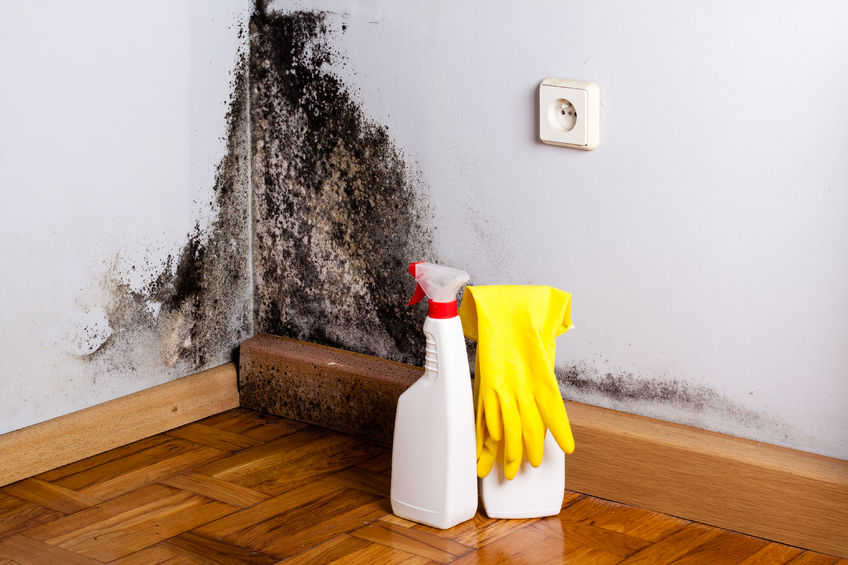 Also referred to as stachybotrys, black mold is one of the most common molds you can find indoors. It grows in areas that are damp, dark, and humid as such conditions favor their existence and survival. Like other types of molds, the black mold releases spores into the surrounding air, which can be absorbed through your skin or inhaled into the lungs. Black mold can be transported easily to other areas in your home through damp clothing, shoes or pets. It is always important to have an idea about the mold to prevent it from causing serious health effects to you and your family.
Also referred to as stachybotrys, black mold is one of the most common molds you can find indoors. It grows in areas that are damp, dark, and humid as such conditions favor their existence and survival. Like other types of molds, the black mold releases spores into the surrounding air, which can be absorbed through your skin or inhaled into the lungs. Black mold can be transported easily to other areas in your home through damp clothing, shoes or pets. It is always important to have an idea about the mold to prevent it from causing serious health effects to you and your family.
How Does Black Mold Look Like
Molds come in different shapes, sizes, and colors such as blue, white, green or black. As the name suggests, this type of mold is noticeable by its black color. They can also be distinctive by their profiles and texture since some of them appear to have a bumpy appearance and hairs while others are flat looking. Black molds are found almost everywhere and they are made up of tiny microscopic organisms. They are hard to see by the human eye until they start clustering together. Mold spores may be invisible as they spread throughout the air when disturbed or blown from the surface they attach themselves.
What Causes Black Mold
There are a few conditions required for mold to grow in a home. They require warmth because they cannot grow in freezing temperature. Water leaks and humidity provide a perfect breeding zone and the moisture required for black molds to grow. Since they cannot grow under ultraviolet light, molds require darkness and a food source such as cotton, wood and any other damp place. The key cause of mold growth is humidity or moisture since other conditions are always present in homes.
Signs that you have Black Mold in your Home
These are the signs you need to look at when analyzing the presence of mold in your home:
Musty smell
Mold has a pungent unpleasant smell and taste. It is easy to notice mold just by looking at its clusters. Always check the room thoroughly in case you can feel the smell but you cannot see the presence of black mold. You can always find them in dark corners under the bed or behind furniture. It could be hiding underneath the plastering, wallpaper or tiles.
Respiratory irritation
Common early symptoms of extreme exposure to black mold include sneezing, itchy skin and eyes, coughing, and headaches. It is always important to seek medical attention if you happen to experience any of these symptoms. If you suspect the growth of black mold in your home, call a professional or an expert who can handle your situation in a safe and secure manner.
Dark Rings and Spots in Ceiling and Corners
The appearance of dark rings and spots in your home could be one of the early signs that you have black mold in your midst. This could be caused by water leakages through the roof or pipes inside the walls. Although these spots may not be black molds, it could indicate a sign of stagnant water or water damage, which makes a perfect recipe for the growth of molds.
Odd Colors and Visible Growths
Although most black molds are identified by their black color, they can also come in many variations. There could be brown or green specks in damp areas such as your bathtub and walls or a furry growth that looks like a black stain. No matter the color of the mold, you can never risk your health on the basis that it will not cause harm. Always take precautionary measures that will safely get rid of the mold from your interiors to avoid damaging your health.
Black mold is a toxic substance that can affect your health negatively. It thrives on damp and humid conditions commonly found in basements, and cold areas. Always watch out for leaks, improve ventilation and make significant attempts to reduce humidity. A dehumidifier will help maintain low temperature levels in your home. Professional testing is also necessary to determine why the black mold is occurring in your home and how you can mitigate the situation. If you notice a musty smell, dark rings, and spots in corners and respiratory irritation, there are high chances of exposure to the effects of black mold. Seek medical attention and professional assistance in case you come across the toxic substance in your home.
